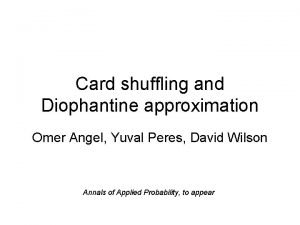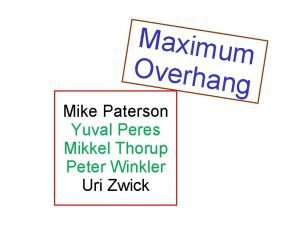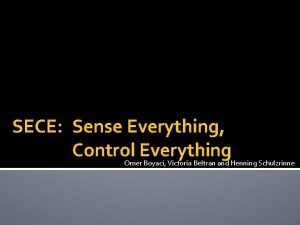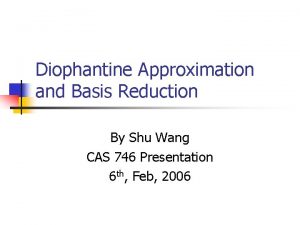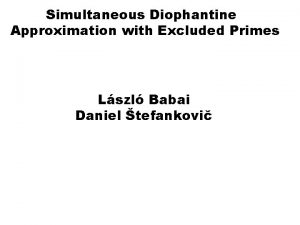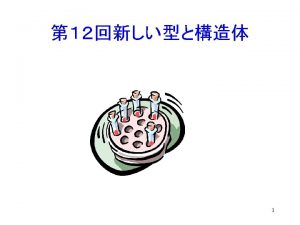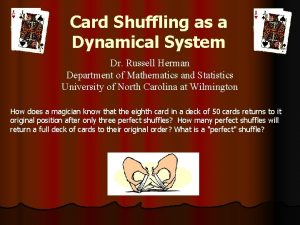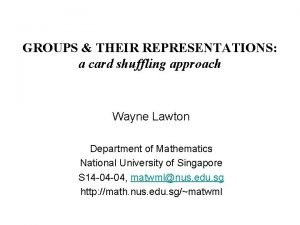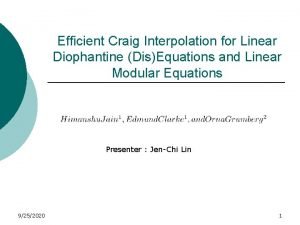Card shuffling and Diophantine approximation Omer Angel Yuval














![Eigenvalues for single card [Jonasson] Eigenvalues for single card [Jonasson]](https://slidetodoc.com/presentation_image_h/101ab9c0b568a4422b532583b3678557/image-15.jpg)




- Slides: 19

Card shuffling and Diophantine approximation Omer Angel, Yuval Peres, David Wilson Annals of Applied Probability, to appear

“Overlapping cycles” shuffle • Deck of n cards • Flip a coin to pick either nth card (bottom card) or (n-k)th card, move it to top of deck • In permutation cycle notation: apply one of the following two permutations, probability ½ each: (1, 2, 3, 4, …, n) (1, 2, 3, 4, …, n-k)(n-k+1)…(n)

Overlapping cycles shuffle k=1 • Pick bottom card or second from bottom card, move it to the top • Called “Rudvalis shuffle” • Takes O(n 3 log n) time to mix [Hildebrand] [Diaconis & Saloff-Coste] • Takes (n 3 log n) time to mix [Wilson] (with constant 1/(8 2))

Generalization of Rudvalis shuffle • Pick any of k bottom cards, move to top log n) mixing time [Goel, Jonasson] (n 3/k 2 • Pick either bottom card, or kth card from bottom, move to top (overlapping cycles shuffle) [Jonasson] (n 3/k 2 log n) mixing time, no matching upper bound For k=n/2, (n 2) mixing time For typical k, (n log n) ? ? ?

Mixing time of overlapping cycles shuffle • Mixing time of shuffle is hard to compute, don’t know the answer (open problem) • Settle for modest goal of understanding the mixing of a single card • Perhaps mixing time of whole permutation is O(log n) times bigger?

Relaxation time for single card

Markov chain for single card • Xt = position of card at time t By time T, card was at n-k about T/n times card was >n-k about T k/n times



Relaxation time of card n=200 n=1000 Spikes at “simple” rationals

Relaxation time for simple rational k/n

Spectral gap for large n as k varies

Bells have width n 3/4: Spectral gap when k/n “near” simple rational

Spectral gap and bell ensemble Thm. Relaxation time is max of all possible bells
![Eigenvalues for single card Jonasson Eigenvalues for single card [Jonasson]](https://slidetodoc.com/presentation_image_h/101ab9c0b568a4422b532583b3678557/image-15.jpg)
Eigenvalues for single card [Jonasson]

Eigenvalues of single card in overlapping cycles shuffle n=50 k=20

Eigenvalues for single card


Further reading http: //arxiv. org/abs/0707. 2994

